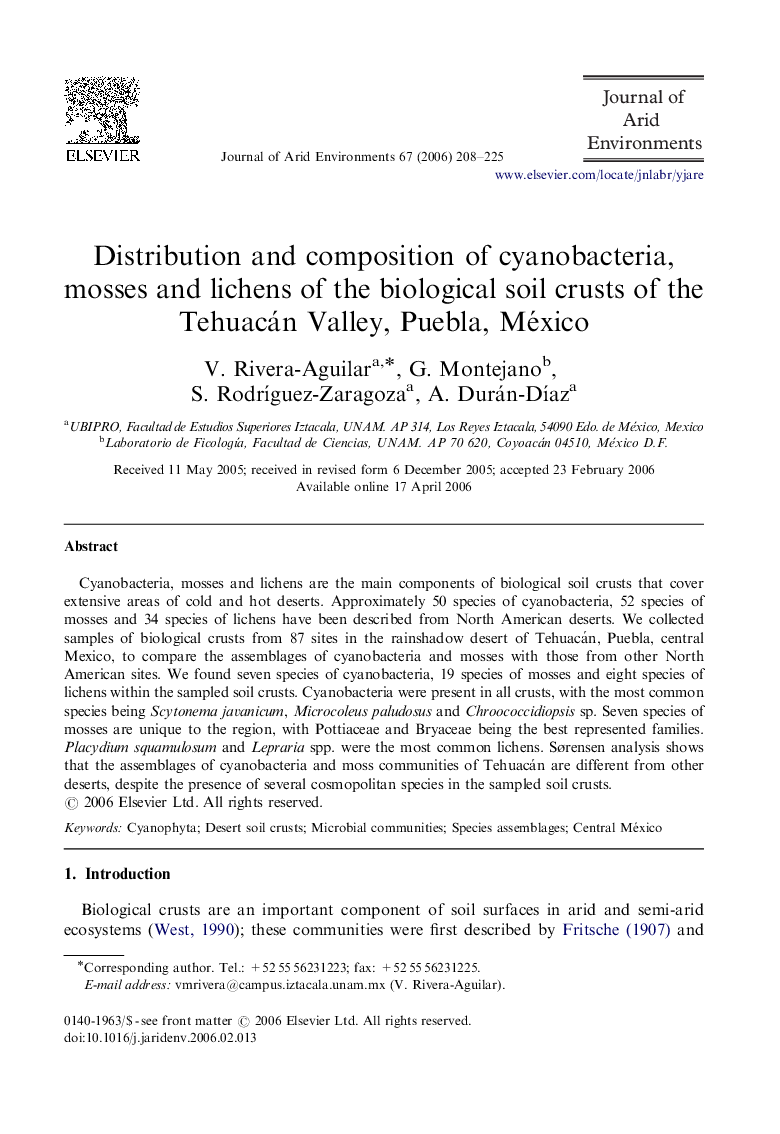| Article ID | Journal | Published Year | Pages | File Type |
|---|---|---|---|---|
| 4394647 | Journal of Arid Environments | 2006 | 18 Pages |
Abstract
Cyanobacteria, mosses and lichens are the main components of biological soil crusts that cover extensive areas of cold and hot deserts. Approximately 50 species of cyanobacteria, 52 species of mosses and 34 species of lichens have been described from North American deserts. We collected samples of biological crusts from 87 sites in the rainshadow desert of Tehuacán, Puebla, central Mexico, to compare the assemblages of cyanobacteria and mosses with those from other North American sites. We found seven species of cyanobacteria, 19 species of mosses and eight species of lichens within the sampled soil crusts. Cyanobacteria were present in all crusts, with the most common species being Scytonema javanicum, Microcoleus paludosus and Chroococcidiopsis sp. Seven species of mosses are unique to the region, with Pottiaceae and Bryaceae being the best represented families. Placydium squamulosum and Lepraria spp. were the most common lichens. Sørensen analysis shows that the assemblages of cyanobacteria and moss communities of Tehuacán are different from other deserts, despite the presence of several cosmopolitan species in the sampled soil crusts.
Related Topics
Physical Sciences and Engineering
Earth and Planetary Sciences
Earth-Surface Processes
Authors
V. Rivera-Aguilar, G. Montejano, S. RodrÃguez-Zaragoza, A. Durán-DÃaz,
